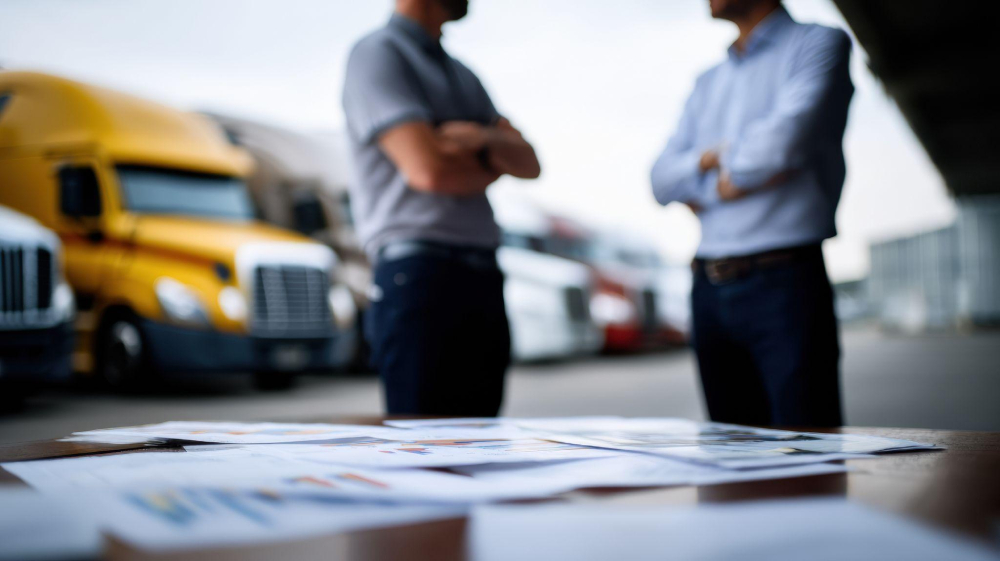The trucking industry has often been referred to as the lifeblood of the American economy, and for good reason. Over 70 percent of all yearly freight in the United States – more than 9.2 billion tons in all – is transported via the nation’s nearly three million trucks. However, this staggering volume and its vital importance within all levels of the economy belie the fact that the trucking industry has a problem. More specifically, it has a fragmentation problem. It’s an issue the industry has grappled with for years, but a potential solution appears to be on the horizon in the form of digital freight matching. It’s been called the “Uberization of Freight,” but can it really solve one of the trucking industry’s oldest and thorniest issues?
THE FRAGMENTATION OF TRUCKING
Trucking is, at its core, a piecemeal industry. It has grown to booming heights without a single, overarching infrastructure to simplify and streamline the various connections that must take place in order for a given load to be transported from its origin to its destination. Instead, the industry relies heavily on third-party brokers, agents who work the phones to connect shippers with carriers, track and confirm deliveries and handle the many other details of the job – all for a hefty fee. The result is a disorganized, inefficient network that produces higher costs, lower margins and too many empty miles for trucks. In fact, the average carrier can expect 12 to 28 percent of their trucks’ mileage to be empty, which results in wasted fuel, longer routes for drivers and more traffic congestion on the roads.
UBERIZING THE INDUSTRY
The answer appears to be simple, at least on the surface. Digital freight matching – or “Uberization” – seeks to cut out the middlemen and allow shippers to connect directly with carriers as quickly and efficiently as possible. The shipper can quickly be connected with the carriers that are best suited to fulfill their needs, with the determination based on factors including the size, weight and nature of the freight, the destination of the load and the proximity and carrying capacity of the trucks. Rather than paying an intermediary to work the phones for hours, pulling together shippers and carriers from all over the map and haggling over prices and delivery deadlines, the process is quick, streamlined and able to be initiated with a few clicks or touches.
Making the switch to digital platforms has the potential to eliminate a number of other headaches for both shippers and carriers, too. The implementation of GPS and advanced mapping software would enable on-demand tracking and tracing, more efficient routing and more convenient fleet and driver management. Integrated transportation management software also promises to make it easier for carriers to track and manage their various loads and ensure that their fleets are working at maximum capacity. Digital document management may also be able to reduce the industry’s reliance on paperwork, allowing immediate scanning, sending and signing of documents that could speed up the entire shipping process. By bringing all these tools together in one cohesive ecosystem – all accessible on-the-go through a smartphone app – the digital management of freight could slash costs, reduce waste and permanently change the way the industry works.
COPING WITH COMPLEXITY
Unfortunately, that isn’t the whole story. While digital freight matching seems to offer a viable answer to some of the most challenging problems in trucking, it’s not yet a fully-formed solution. The trucking industry is far more complex than the world of ride-sharing from which Uber and its competitors emerged. Shipments are often time-critical and high-value, requiring contingency plans and real-time problem solving in the event of equipment failure or other unforeseen factors, and some loads may require the juggling of multiple modes of transportation, specialized equipment, trained crews for loading and unloading or other special considerations that don’t lend themselves easily to a largely automated digital platform.
By removing much of the human element from the shipping process, Uber-like platforms may also make it more difficult to deal effectively with these complexities. The trucking industry is largely one of relationships, and a major advantage of an experienced third-party broker is that they can leverage their existing relationships to draw on a wide net of resources to ensure that even the most difficult jobs get done on time. This advantage is difficult to replicate on a digital freight management platform, which may limit its effectiveness and appeal.
The trucking industry is one in need of change. With an extraordinary volume of freight being moved by an equally extraordinary number of small carriers, largely bound together by third-party intermediaries relying on telephone calls and drawn-out negotiations, it’s clear that there’s abundant room for improvement. The problem is only exacerbated by the rapid growth of the industry and the shortage of qualified drivers, and the Uber blueprint offers a promising solution. There remain plenty of questions to be answered before such platforms see widespread adoption, but there’s little doubt that change is on the horizon for the trucking industry – whether the industry is ready for it or not.
.png)




-p-1600.webp)
